Sciatica (pinched nerve pain)
Sciatica pinched nerve pain means compression of the sciatic nerve along its course from its origin to the back of the thigh. sciatic nerve pinched due to various reasons such as muscle tightness, disc prolapse, spondylosis, etc.
Table of Contents
What Is Sciatica pinched nerve pain?
- Sciatica is a medical condition referring to pain that moves along the path of the sciatic nerve, which runs from the lumbar spine in the lower back through the hips, buttocks, thighs, and calves. In most cases, sciatica harms just one side of the body.
- One of the main reasons sciatica creates is when a bone spur or herniated disc causes spinal narrowing, a condition known as spinal stenosis. Spinal stenosis causes nerve compression, resulting in nerve pain, inflammation, and numbness in the harmed leg.
- Fortunately, most cases of sciatica respond well to non-surgical treatments within certain weeks or months. People with more severe or persistent symptoms may need more intensive treatments to correct symptoms. Serious sciatica may cause bladder or bowel incontinence, severe pain, and weakness in the legs.
- Sciatica creates when the sciatic nerve is compressed and becomes pinched. While certain people may confuse a pinched nerve with sciatica, sciatica is a pinched nerve that only affects the sciatic nerve. While sciatica starts as nerve inflammation, sciatica can cause nerve damage if left untreated.
- While sciatica sometimes develops from a bone spur or herniated disc, it can also develop from a tumor or if the nerve becomes damaged from an underlying medical condition, such as diabetes.
Certain risk factors may improve the likelihood of developing sciatica, including:
- Age: Sciatica is more likely to develop with age, with 1 in 4 older Americans experiencing sciatica pain. Sciatica becomes more usual with older age, as many age-related spinal changes can lead to sciatica. For example, old age sometimes increases a person’s chance of herniated discs, a leading cause of sciatica.
- Weight: Being overweight is another risk factor that can improve the likelihood of developing sciatica. Extreme weight causes more pressure on the spine, which can cause or worsen nerve compression and sciatica.
- Occupation: Your working environment plays a big role in your spinal health and can increase the risk of sciatica. Physically demanding jobs or a job-related accident, like a slip and fall or strain from repetitive lifting, can cause nerve compression. Office jobs that need extended periods of sitting can also lead to sciatica because sitting places pressure directly on the nerve.
- Diabetes: Diabetes harms how your body uses glucose — blood sugar — and increases your risk for nerve damage. An unhealthy or damaged sciatic nerve is more such as to cause pain or other uncomfortable symptoms.
- Smoking: Smoking is another risk factor that can improve the chance of developing sciatica. Those who stop smoking may decrease their risk of sciatica and nerve-related pain.
- Posture: Good posture promotes healthy spinal alignment and decreases tension throughout the body. Incorrect or poor posture can worsen sciatica symptoms or improve the risk of developing sciatica. Maintaining a healthy posture can relieve nerve compression and decrease the risk of nerve-related pain.
Symptoms of sciatica
- Sciatica can cause different symptoms, but one of the most recognizable and common sciatica symptoms is pain that radiates from the lower back through the buttock and down the back of a leg. You can develop pain or discomfort anywhere along the harmed nerve pathway.
- While pain can happen anywhere along on nerve pathway, it most usually follows a path from the low back, buttock, back of the thigh, and calf. Pain can differ from a dull, mild ache to a sharper pain. In serious cases of sciatica, patients may experience constant or severe pain.
- Although some sciatica pain comes and goes gradually, others may experience a sudden jolt of pain that feels such as an electrical shock. Sciatica pain sometimes worsens when sneezing, coughing, or sitting for extended periods, as these actions aggravate pain and discomfort.
- In most cases, sciatica harms only one side of the body, but it can also occur on both sides. Other sciatica symptoms involve muscle weakness, tingling, and number in the affected foot or leg. It is possible to have numbness in one area of the leg and pain in another region.
- In many cases, mild sciatica may increase over time, but you should see a doctor if at-home remedies do not relieve pain or other symptoms. If symptoms are severe, constant, or disrupt daily life, you should plan to look to a physician. While less common, sciatica can also hinder bladder and bowel control, conducting to incontinence.
What Is A Pinched Nerve?
- A pinched nerve happens when excess pressure is placed on a nerve by surrounding structures, including tendons, muscles, cartilage, bones, or tissues. A pinched nerve starts to pain, weakness, numbness, and tingling. While sciatica is a pinched sciatic nerve, a pinched nerve can happen anywhere in the body.
- While a pinched nerve causes pain, a pinched nerve does not hurt whole the time. People may experience episodes of pain with periods of relaxation. Pinched nerves often develop in the back, yet they can also develop in the wrists and cause carpal tunnel syndrome.
- Fortunately, pinched nerve symptoms sometimes improve with non-surgical treatments and rest. Most people experience relief from pinched nerve symptoms in certain days or weeks, depending on the severity of their symptoms. More serious symptoms may take longer to improve or require additional treatments or surgery.
- If a nerve is pinched for a short period, there is commonly no long-term or permanent damage, and nerve function returns to normal when the pressure is alleviated. If a nerve is pinched for a long period, permanent nerve harm is possible, making it important to seek treatment as soon as possible.
Potential causes involve:
- Weight: Carrying excess weight can cause further pressure and compression on the nerves. Pregnant women are also at a greater risk of developing a pinched nerve as pregnancy causes the nerve pathways to swell.
- Lifestyle or working conditions: Activities or jobs that need repetitive movements or heavy lifting can increase the risk of a pinched nerve. Bed rest or long periods of little to no activity may also improve the risk of nerve compression.
- Sex: Research has shown that women are 3 times more likely to develop carpal tunnel syndrome.
- Underlying medical conditions: Certain medical conditions can improve the risk of developing a pinched nerve. Trauma, osteoarthritis, and other conditions can cause bones to thicken, conducting bone spurs that can apply pressure on the nerves. Rheumatoid arthritis is another risk factor for a pinched nerve because it causes inflammation that can press the nerves.
Symptoms of a pinched nerve
- Pinched nerves are a usual condition, affecting about 85 out of 100,000 adults in the United States (US) each year. While people of any age can develop a pinched nerve, they are most usual in adults 50 years or older. Age is a conducting factor in a pinched nerve, as spinal degeneration and arthritis may contribute to pinched nerve symptoms.
- Pain is the most usual and noticeable pinched nerve symptom. In certain cases, pain is the only symptom someone may develop. Pain often happens directly where the pinched nerve is, but some pinched nerves can cause radiation pain, including radicular pain.
- You may experience tingling, numbness, burning, or a pins and needles sensation. A pinched nerve can also conduct to weakness in the extremities, especially during more physically demanding activities. Many people notice that their hand or foot “falls asleep” because of this tingling sensation.
- Certain movements place additional pressure on the spine and cause more serious symptoms. For example, if a pinched nerve happens in the neck, you may notice neck pain, especially when turning your neck in a certain direction can cause more severe pain. Certain people may experience worsening symptoms at night while sleeping.
- Early diagnosis of a pinched nerve can greatly increase the success of treatment and managing pain and related symptoms.
Is A Pinched Nerve The Same As Sciatica?
- No, a pinched nerve and sciatica are various. While sciatica is a type of pinched nerve, not each pinched nerve is sciatica. Sciatica is when the sciatic nerve is pinched and harmed. Pinched nerves can happen anywhere throughout the body and are not limited to the spine.
- There are nerves throughout your whole body, and any nerve can become pinched or compressed. Certain nerves are more likely to be affected, yet that does not mean a pinched nerve only develops in these nerves. While we may think of the back, neck, or wrists when discussing a pinched nerve, any nerve can get compressed.
- You may experience symptoms of the pinched nerve in your arms or legs. In certain cases, people may develop more than one pinched nerve at a time. Often, people may have a pinched nerve in their wrists and sciatica. Whether or not you have a pinched nerve or sciatica, receiving a proper diagnosis and treatment is required.
- The longer a nerve is pinched, the greater the risk of permanent damage. Early detection and prompt treatment sometimes mean the difference between immediate relief and the need for surgery. Nerve pain can be acute, meaning it lasts for a certain day to weeks. Chronic nerve pain is when a pinched nerve causes discomfort for 3 months or longer.
Conditions Similar To Sciatica
- Many people trust any condition that causes pain in the buttocks or leg to be sciatica when many conditions can cause these symptoms. It assists to understand the source of your leg pain to seek out the proper treatment and find lasting relief.
Some conditions similar to and often confused with sciatica involve:
Joint problems
- Joint problems in the back can also cause symptoms same to sciatica, including radiating pain. A usual cause of joint complications is spinal arthritis, specifically osteoarthritis, which is the most common arthritis that affects the spine. While spinal arthritis can develop anywhere along the spinal column, it is most usual in the neck or lower back.
- Stiffness and pain are the most usual symptoms of spinal arthritis. If arthritis harms the lower back, pain can develop in the lower back, resembling sciatica symptoms. Generally, arthritis is more usual with age, as the spine and joints begin to wear down over time.
Sacroiliac joint dysfunction
- Sacroiliac (SI) joint dysfunction is another condition that may cause symptoms same to sciatica, including lower back and leg pain. Sacroiliac (SI) joint dysfunction causes leg pain that may be challenging to distinguish between radiating leg pain from sciatica, as these two symptoms often feel similar.
- Restricted or excess Sacroiliac (SI) joint motion can result in pain that travels down the leg. While this symptom is the same as sciatica, it requires a different treatment. While non-surgical Sacroiliac (SI) joint treatments are often effective, some patients may require Sacroiliac (SI) joint fusion.
Piriformis syndrome
- Finally, piriformis syndrome is a spinal condition that causes the same symptoms as sciatica. Piriformis syndrome is when the piriformis, discovered in the buttock, irritates the sciatic nerve and causes radiating pain down the leg. While this type of pain is incredibly similar to sciatica, it is a various type of pain because nerve irritation does not occur in the lower back.
- Many patients experience relaxation from piriformis syndrome from anti-inflammatory medicine and physical therapy. Those with back trauma or scar formation are sometimes at a higher risk for developing piriformis syndrome.
Preventing Sciatica
There are several things to consider when preventing sciatica, involving:
- Exercise: Exercise is one of the most important calculates to take to minimize the risk of sciatica. Exercising assists strengthen the core and back muscles, stabilizing and supporting the spine. Many people find yoga, guided stretches, and other forms of light exercise to ease stiffness and decrease the risk of sciatica.
- Posture: Our daily posture, both when standing and sitting, play a main role in our spinal health. Poor or unhealthy posture can improve the risk of developing sciatica and other spinal conditions.
- Lifting techniques: Improper lifting techniques put a big strain on the back and can cause nerve compression. Poor lifting techniques can also conduct in herniated discs, a common condition that causes sciatica. Prioritizing healthy lifting techniques can ensure you do not place excess strain on the back.
Treatment For Sciatica
- So many treatments for sciatica are available that can manage pain and other uncomfortable symptoms.
Some of the most commonly prescribed treatments for sciatica involve:
- Non-surgical treatments: Fortunately, so many people see significant improvement with non-surgical treatments, involving exercise, hot and cold packs, massage, acupuncture, and physician-recommended bed rest.
- Physical therapy: Physical therapy is a very good tool for people who are experiencing back pain. A physical therapist will create a personal exercise and stretching program to strengthen your core and back muscles. Physical therapy can also increase posture, alleviating excess pressure on the sciatic nerve.
- Medication: Over-the-counter medication can minimize pain and inflammation related to sciatica. For more serious pain or discomfort, physicians may recommend prescription-strength medication.
- Surgery: A physician may suggest surgery if non-surgical treatments do not provide adequate relaxation for sciatica symptoms. 2 of the most popular and effective sciatica, surgeries are a discectomy and laminectomy.
Look for a Doctor If You Think You Are Experiencing Sciatic Nerve Pain
- If you think you are experiencing sciatica pinched nerve pain, look for a physician as soon as possible. Self-diagnosis is not accurate enough to find lasting relief from sciatica and nerve pain. Sometimes, sciatic pain is a symptom of an underlying condition that may be more dangerous than just a pinched nerve that needs immediate treatment.
FAQs
It may feel such as a mild tingling, dull ache, or burning sensation. In certain cases, the pain is severe enough to make a person unable to move. The pain most often happens on one side. Some people have sharp pain in one area of the leg or hip and numbness in other parts.
Keep Moving. If your pain is not too severe, it is a good idea to stretch, go for short walks, and do any other physical activities that you feel up to. It is especially important to try to stretch your lower back since that is where something may be pinching your sciatic nerve.
Sciatica commonly resolves on its own without treatment within a month or two. However, that does not mean it is gone for good. If you do not resolve the underlying condition that caused sciatica, it may recur and even develop into a chronic pain condition.
PT commonly involves most rapid relief remedies (icing, heating, massage, stretching, strength, and flexibility exercises) to provide pain relief, eliminate the underlying cause of the sciatica nerve pain, and cure further injury and flare-ups.
On the back – Research looks that many people find relief from pain when sleeping on their back. This can relax pressure on the low back and sciatic nerve. For best results, elevate the knees by placing 1 or more pillows beneath them. Make sure the neck is supported with a pillow.
Most sciatic pain lasts 4 to 6 weeks. Acute pain can feel such as a stabbing, shooting, or burning sensation, which may subside into a dull ache. Sciatica becomes chronic if it lasts longer than six weeks and does not improve.
One of the big red flags for diagnosing sciatica is that the pain is commonly limited to only one side of the body. Other red flags that indicate sciatica involve pain when standing or sitting, numbness in the legs, and weakness or numbness when moving a leg or foot.

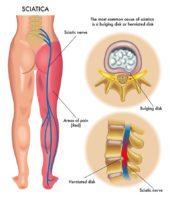
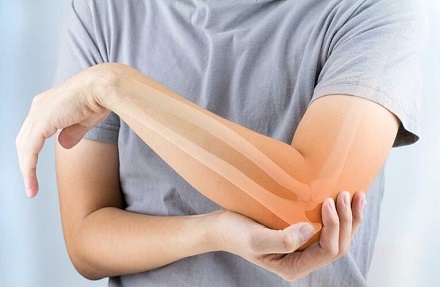
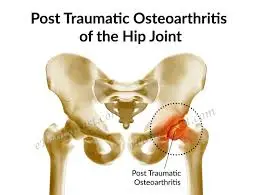
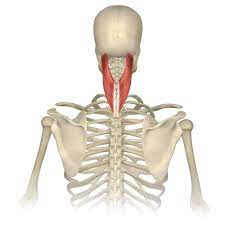
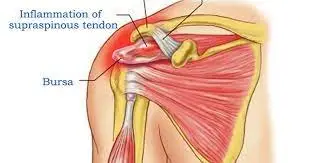
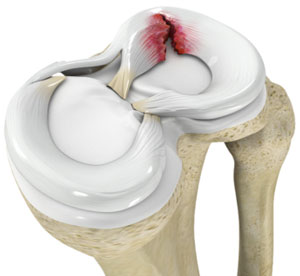
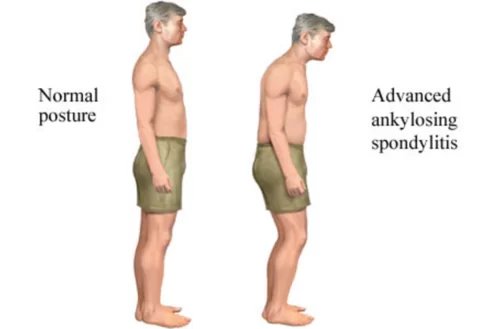
2 Comments